Impatiens capensis – Jewelweed

Jewelweed (Impatiens capensis), also known as Spotted touch-me-not, has an incredible ability to eliminate itching from poison ivy and bug bites. Jewelweed is a self-seeding annual that is one of the few native plants that can successfully compete with garlic mustard. Jewelweed can be found near water, often forming dense stands at the edges of […]
Cantharellus lateritius – Smooth Chanterelles

Smooth Chanterelles (Cantharellus lateritius) are a type of chanterelle that sometimes lacks the wrinkles, or false gills, under its cap. Chanterelles are a summer mushroom that can be found after consistent rains and humid weather. Chanterelles grow in soil, often near water and along walking paths. The mushroom uniquely has the same color across the […]
Monotropa uniflora – Ghost Pipe
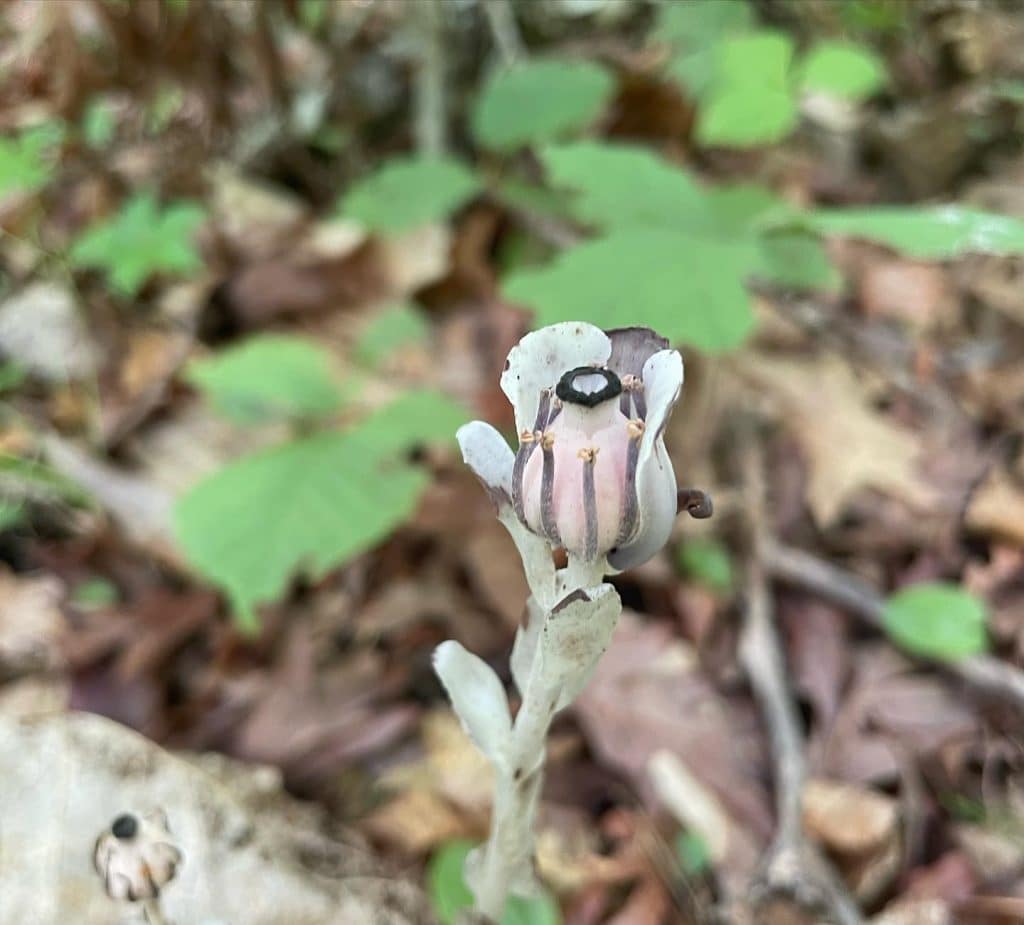
The Ghost Pipe (Monotropa uniflora) is a native plant that lacks chlorophyll. Rather than using photosynthesis, ghost pipes get their nutrients from a fungus in the Russulaceae family, which is getting its nutrients from trees. Each ghost pipe plant blooms for only 1 week annually. It can be found blooming sometime between late June and […]
Amphicarpaea bracteata – American hog-peanut
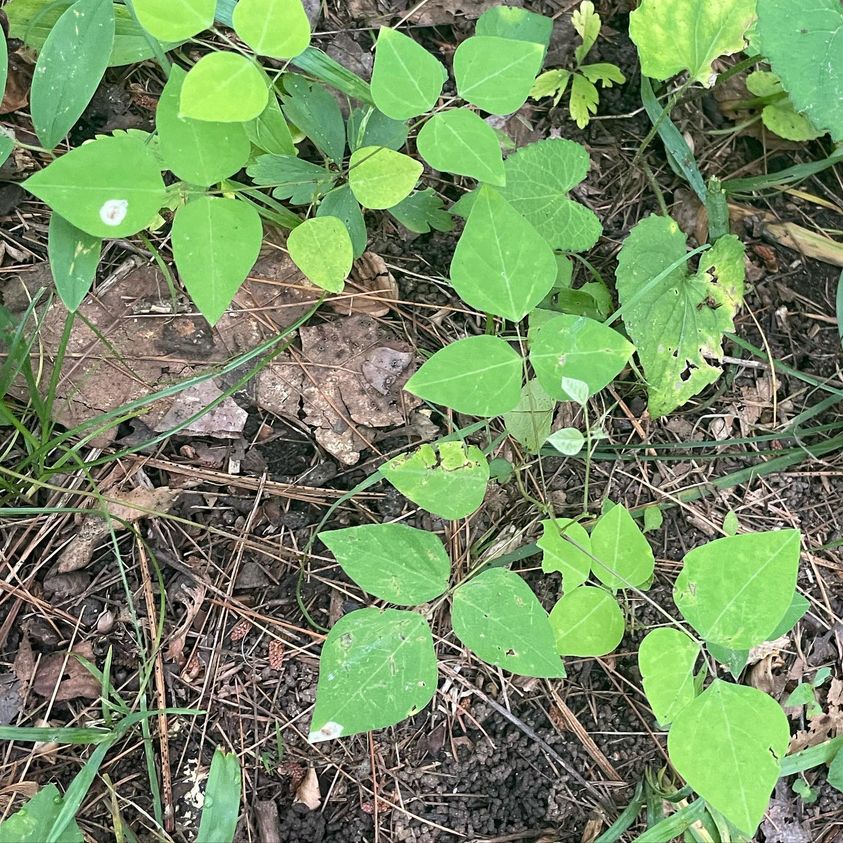
American hog-peanut (Amphicarpaea bracteata) is a native plant in the pea (Fabaceae) family. Hog peanuts can be identified by their alternate, trifoliate leaves which are attached to a thin stem. Hog peanuts produce 2 different types of flowers and seeds. The plant produces pea-like flowers in late summer. These flowers are followed by pods […]
Corylus cornuta – Beaked Hazelnut
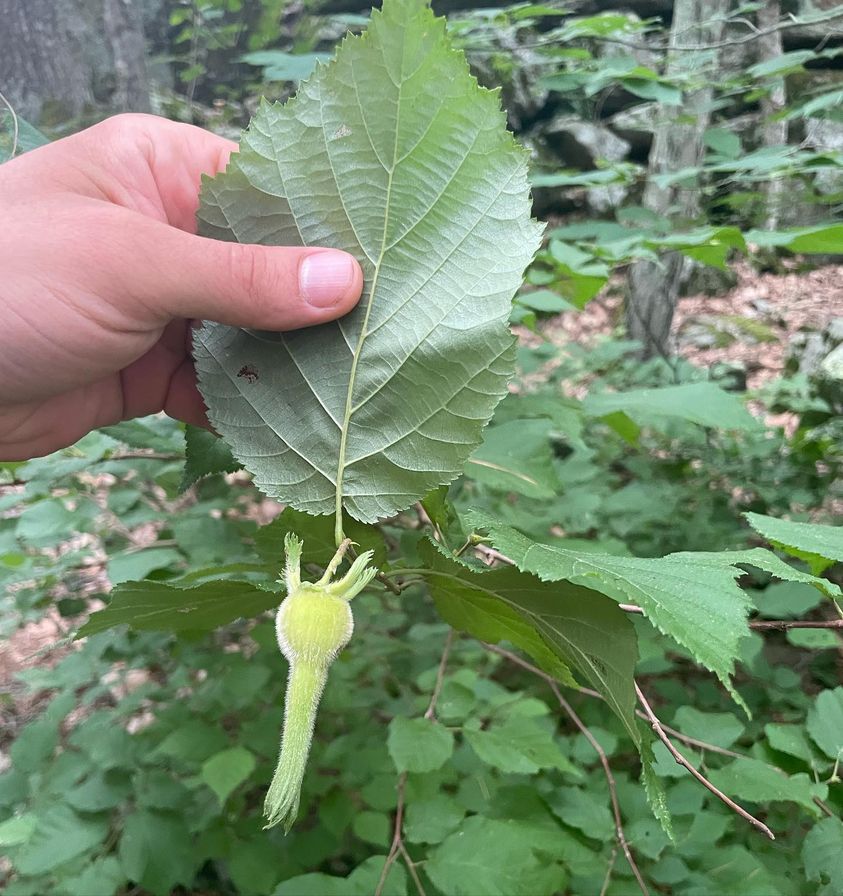
Beaked Hazelnuts (Corylus cornuta) are native nuts that grow from deciduous shrubs or small trees. Hazelnuts can be found in sunny areas with loamy soil (soil composed of sand, silt, and clay). The trees require a lot of sun and moisture to produce nuts. Beaked hazelnut trees can be identified by their alternate, slightly heart-shaped […]
Pastinaca sativa – Wild Parsnip
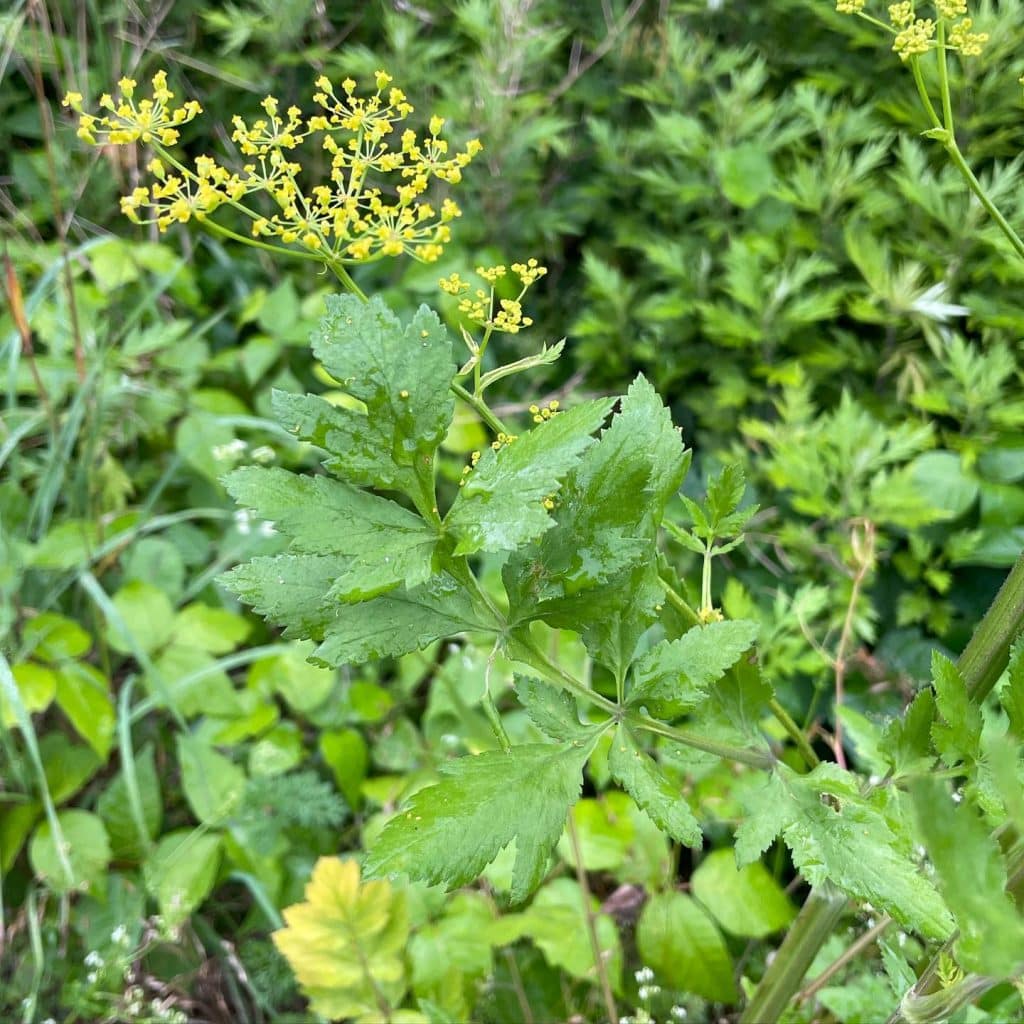
Wild Parsnip (Pastinaca sativa) is the same species as cultivated garden parsnip. It is a non-native plant that was brought here from Europe as a crop. Wild parsnip can be found in backyards, field edges, and disturbed areas that receive plenty of sun. Wild parsnip can be identified by its celery-like leaves, deeply grooved main […]
Cantherellus cinnabarinus – Cinnabar Chanterelles
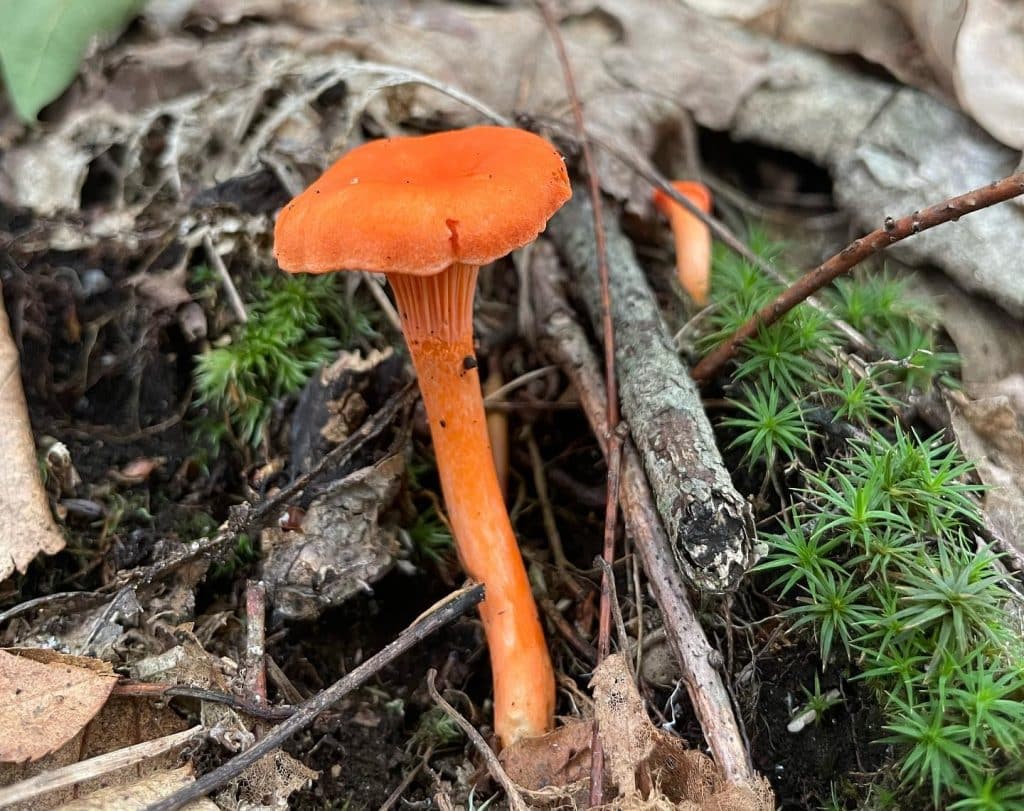
Cinnabar chanterelles (Cantherellus cinnabarinus) are a common choice edible mushroom that can be found in the summer months in New England. Cinnabar chanterelles can be identified by their uniform reddish-orange color, vase shape, and forked ridges under the cap that run down the stem. Cinnabar chanterelles have a firm texture, somewhat like string cheese. They […]
Rubus phoenicolasius – Wineberries

Wineberries (Rubus phoenicolasius) are an invasive type of raspberry from Japan. They were brought here for their potential in breeding hybrid raspberries. Wineberries can be identified by their purplish-red stems with hairy bristles and bright orangish-red berries. Wineberry leaves are rounder than raspberry leaves. The immature fruits are covered by a reddish hairy calyx which […]
Boletus separans – Lilac Bolete
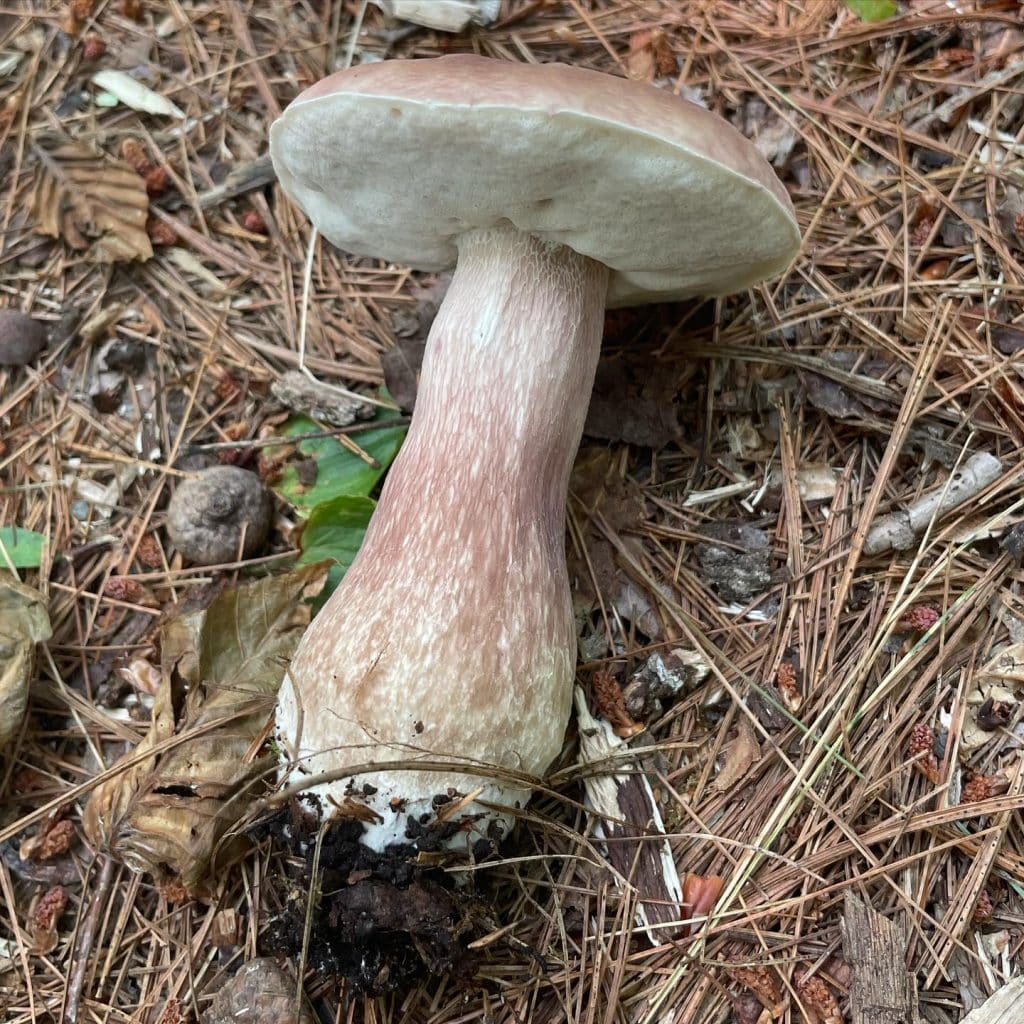
The Lilac Bolete (Boletus separans) is a choice edible mushroom related to the King Bolete (Boletus edulis). Lilac boletes can be found in eastern North America from July-September. They have a mycorrhizal relationship with hardwood trees, especially red oaks. Lilac boletes can be identified by their purplish stalk with white reticulation (netting). Cap color varies […]
Vaccinium angustifolium – Common Lowbush Blueberries
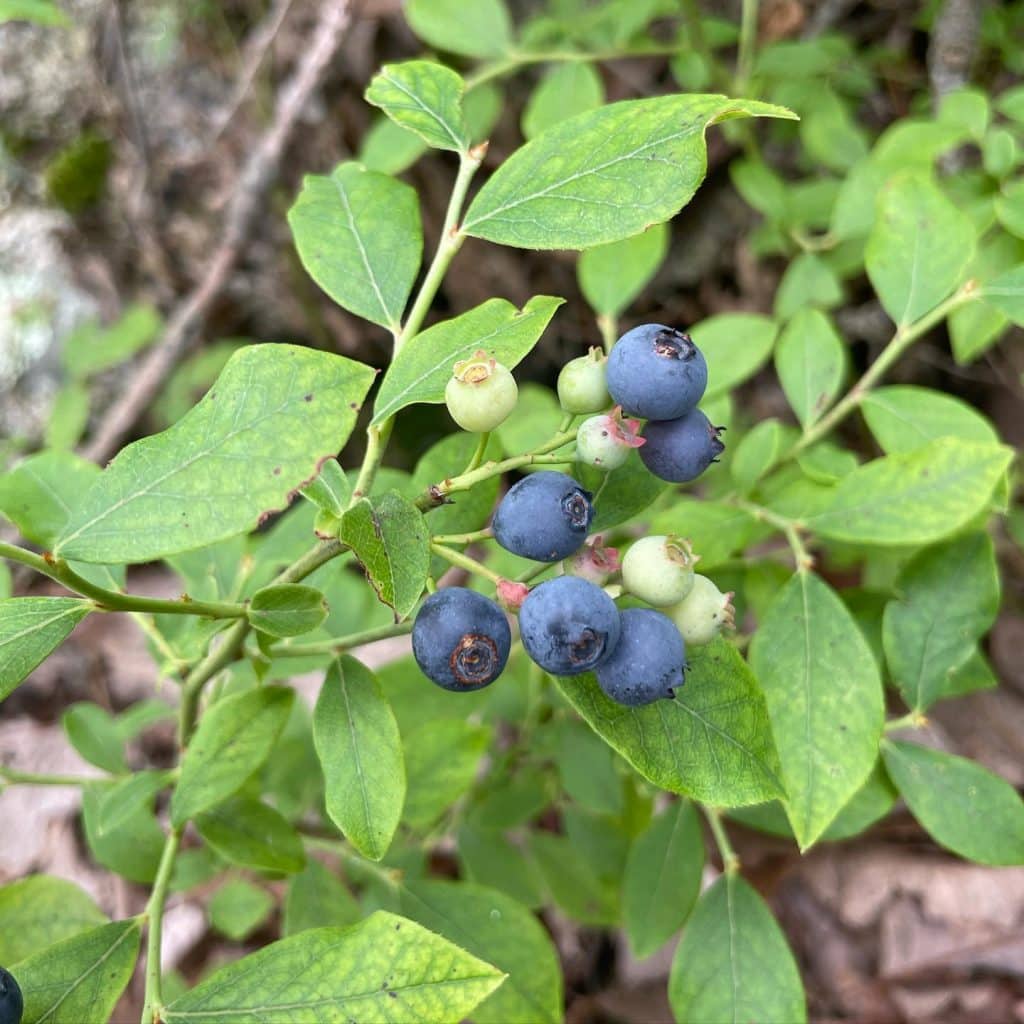
Common Lowbush Blueberries (Vaccinium angustifolium) ripen July-August in Connecticut. Blueberries are native to New England. There are 9 species of blueberries that grow in New England, 4 of which only grow in Northern New England at higher elevations and 1 of which only grows in coastal wetlands. Common Lowbush Blueberries can be found in […]
Gyroporus castaneus – Chestnut Bolete

The Chestnut Bolete (Gyroporus castaneus) is an edible mushroom that can be found fruiting summer to fall. The chestnut bolete can be found in Europe and eastern North America. It grows singly or in small groups near hardwood trees, often oak and sweet chestnut. It is unclear if the mushroom has a mycorrhizal or saprobic […]
Russula parvovirescens – Quilted Green Russula
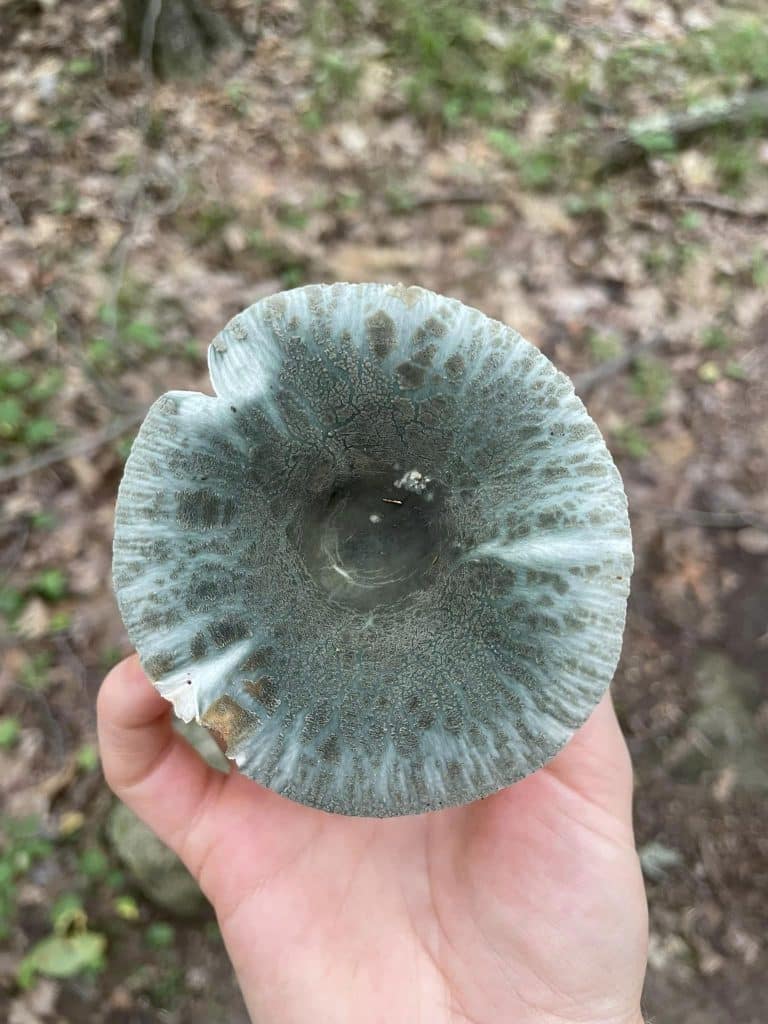
The Quilted Green Russula (Russula parvovirescens) is an edible mushroom that can be found in the Eastern United States. It was separated from the Russula virescens species in 2006. Quilted Green Russulas are found most abundantly July-August in forested areas. They are mycorrhizal with hardwood trees and occasionally conifers. It’s most commonly associated with oak […]
Juniperus virginiana – Eastern Red Cedar

Eastern Red Cedar (Juniperus virginiana) is a native tree that produces edible seed cones, also known as “juniper berries”. Eastern red cedars produce two types of needles. The young needles are short and sharp. The older needles are scale-like. The seed cones, or “berries”, take three years to mature. They are ready to harvest when […]
Berberis thunbergii – Japanese Barberry
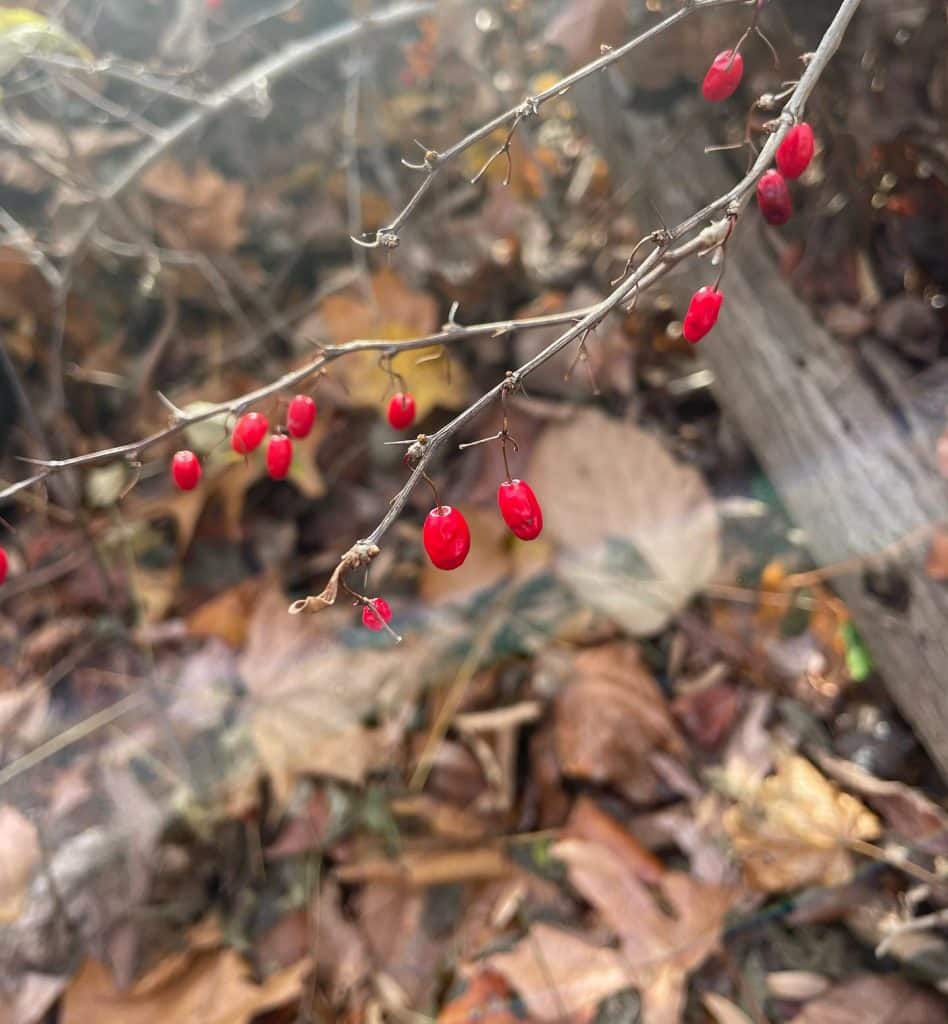
Japanese Barberry (Berberis thunbergii) is an invasive plant with edible and medicinal berries that persist through the winter. Japanese barberries can be found in forest clearings and overgrown fields. In the spring, the plant produces edible small leaves that are accompanied by a single spine. The plant has yellow flowers in the spring which become […]
Opuntia humifusa – The Eastern Prickly Pear

Eastern Prickly Pear (Opuntia humifusa) is a cactus that is native to Connecticut. The Eastern prickly pear can be found in sunny, dry environments. It prefers sandy, rocky soil and tends to form large colonies. The Eastern prickly pear can survive freezing temperatures due to high levels of glucose in its cells. The cactus has […]
Urtica dioica – Stinging Nettle
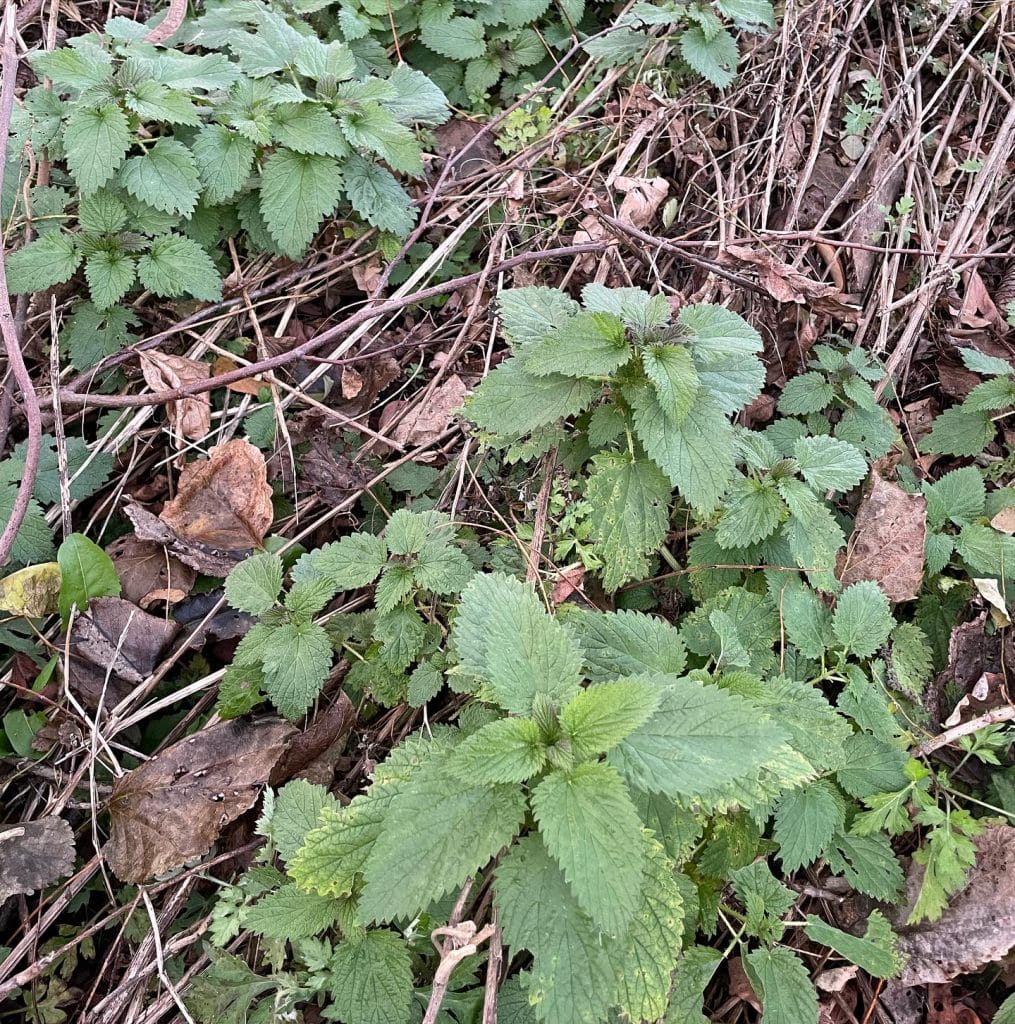
Stinging nettle (Urtica dioica) is a highly nutritious plant that can be found throughout the continental United States. There are multiple subspecies of stinging nettle. American stinging nettle (Urtica dioica subsp. gracilis) is native to North America. Stinging nettle has opposite, heart-shaped leaves with toothed margins. The plant produces small gray-green flowers that dangle like […]
Crataegus spp. – Hawthorn
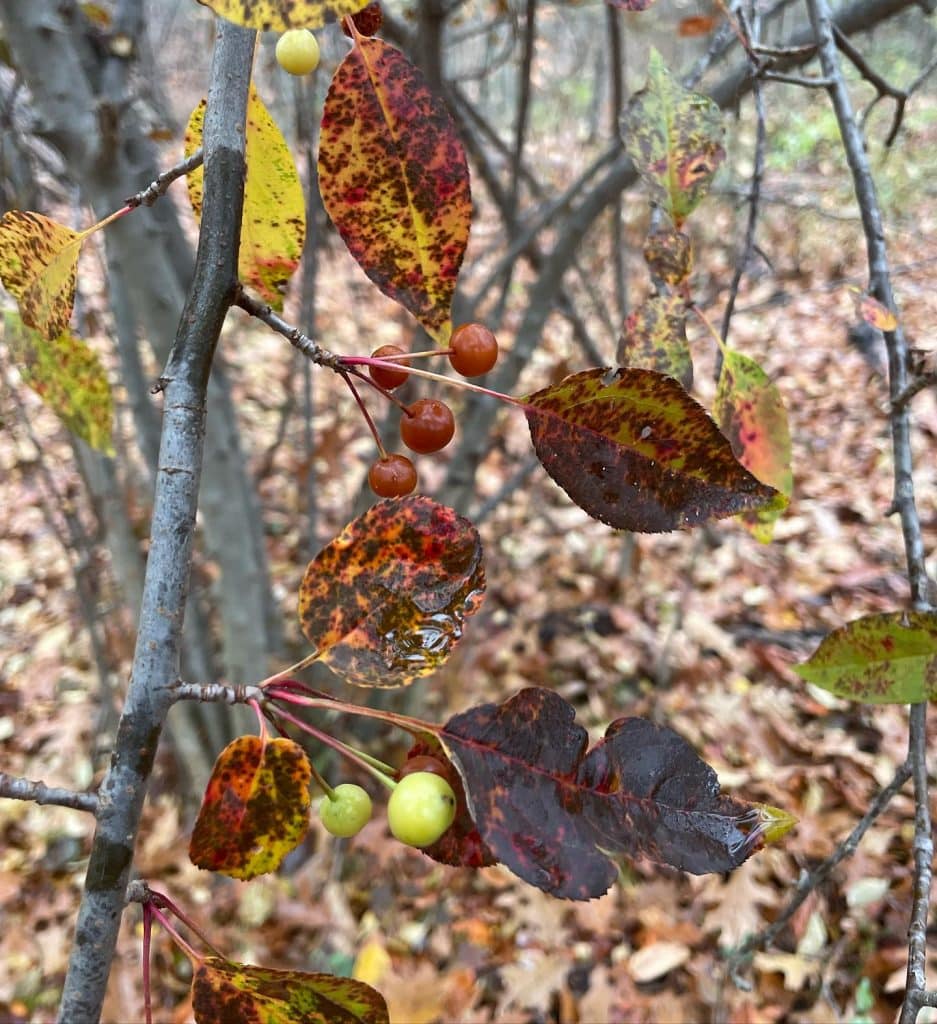
Hawthorn (Crataegus spp.) is a group of over 1,000 species of edible plants in the rosaceae family. Hawthorn is the oldest known medicinal herb, with use dating back to the first century BC. It could be a small shrub or tree. Hawthorn has serrated, oval-shaped leaves which often have lobes. The branches have sharp […]
Verbascum thapsus – Common Mullein

Common mullein (Verbascum thapsus) is a non-native plant with a myriad of medicinal benefits. Mullein can be found growing in sandy or rocky soil in full sun. It is often found in waste places. Mullein is a biennial. The plant produces a basal rosette of fuzzy leaves it’s first year. The second year it sends […]
Morella pensylvanica – Northern Bayberry

Northern Bayberry (Morella pensylvanica) is a native shrub that can be found on coastlines and in swampy woodlands. Northern bayberry has alternate, waxy leaves which have a few shallow teeth at the tip end. The shrubs produce clusters of bluish gray fruits in the fall. In the spring, the tender leaves can be used fresh […]
Quercus rubra – Northern Red Oak
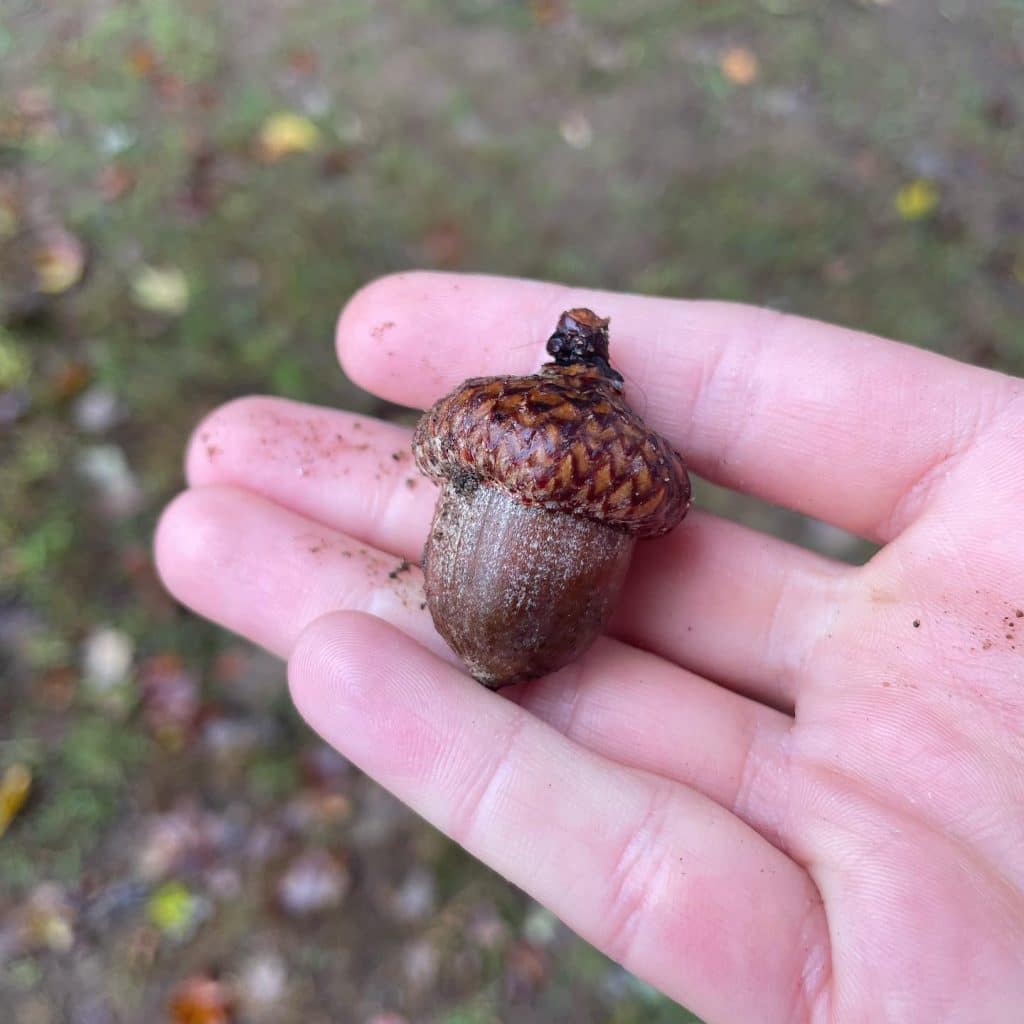
The Northern Red Oak (Quercus rubra) is a fast growing tree that can reach up to 80 feet tall. Northern red oaks can live up to 400 years old. There are two major groups of oak trees. Red and black oaks have sharper lobes that end in a point and nuts that take two […]
